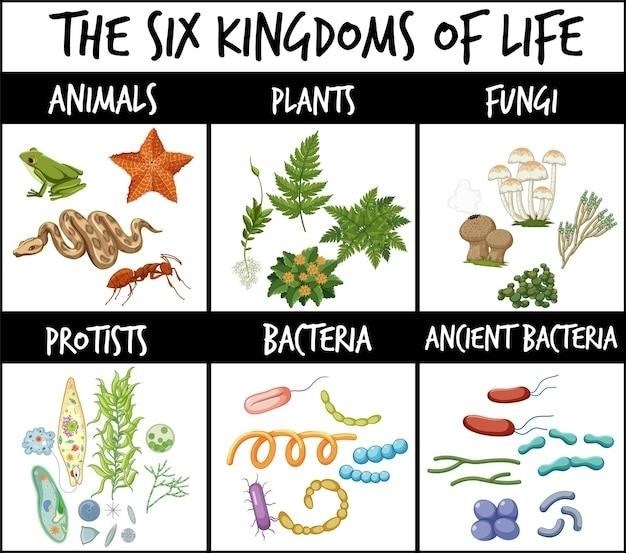20-Minute Guided Meditation Script PDF⁚ A Comprehensive Guide
This comprehensive guide will explore the benefits, types, and techniques of creating a 20-minute guided meditation script. You’ll find free PDF scripts for personal use, learn how to integrate guided meditation into your routine, and discover the science behind its effectiveness.
Benefits of 20-Minute Guided Meditations
Engaging in a 20-minute guided meditation session offers a multitude of benefits for your physical and mental well-being. Regular practice can effectively manage stress, alleviate anxiety, and promote a sense of calm and relaxation. By focusing on your breath and body, you cultivate mindfulness, enhancing self-awareness and emotional regulation. Studies have shown that guided meditation can improve sleep quality, reduce chronic pain, and boost your immune system. Moreover, it can foster a sense of gratitude, increase compassion, and enhance your overall sense of peace and well-being. By incorporating a 20-minute guided meditation into your daily routine, you can experience these transformative benefits and embark on a journey towards a more balanced and fulfilling life.
Types of Guided Meditations
The world of guided meditations offers a diverse range of approaches to suit different needs and preferences. Some popular types include mindfulness meditations, which focus on cultivating present-moment awareness and acceptance of thoughts and feelings without judgment. Body scan meditations guide you through a systematic exploration of your physical sensations, promoting relaxation and body awareness. Visualizations invite you to create vivid mental imagery, often incorporating themes of peace, tranquility, or personal growth. Other types include loving-kindness meditations, which cultivate compassion and kindness towards oneself and others, and gratitude meditations, which encourage appreciation for the positive aspects of life. Exploring different types of guided meditations can help you discover the practices that resonate most deeply with you and support your personal journey of self-discovery and well-being.
Creating a 20-Minute Guided Meditation Script
Crafting a 20-minute guided meditation script requires careful planning and attention to detail. Begin by choosing a theme or focus, such as stress reduction, self-compassion, or creative visualization. Next, outline the script’s structure, including an introduction that sets the tone and invites the listener to settle in, a guided meditation sequence, and a closing that gently brings the participant back to the present moment. Use clear and concise language, avoiding jargon or overly complex concepts. Incorporate imagery and metaphors to enhance the experience and create a sense of engagement. Consider incorporating calming music or nature sounds to create an immersive atmosphere. Remember to practice your script aloud before recording to ensure a smooth and natural flow. With careful planning and attention to detail, you can create a powerful and transformative 20-minute guided meditation script that can benefit you and others.
Free 20-Minute Guided Meditation Scripts
There are a wealth of free 20-minute guided meditation scripts available online, offering a variety of themes and styles to suit your preferences. These scripts can be downloaded in PDF format, allowing you to access them anytime and anywhere. Many websites and platforms provide these free resources, catering to various needs, from stress relief and mindfulness to gratitude practices and creative visualization. Some websites even offer guided meditations specifically tailored for use in therapy and counseling sessions, providing clients with a sense of containment between appointments. These free scripts can be a valuable starting point for exploring the benefits of guided meditation and discovering what resonates with you. Remember to explore different options and find scripts that align with your personal goals and preferences, creating a personalized meditation practice that supports your well-being.
Using Guided Meditation for Stress Relief and Mindfulness
Guided meditation offers a powerful tool for managing stress and cultivating mindfulness. By using a 20-minute guided meditation script, you can create a dedicated space for relaxation and inner peace. These scripts often guide you through breathing exercises, body scans, and visualizations, helping to shift your focus from racing thoughts and anxieties to the present moment. The practice of mindfulness encourages awareness of your thoughts, feelings, and sensations without judgment, promoting a sense of calm and acceptance. Regular guided meditation can help reduce stress levels, improve sleep quality, and enhance emotional regulation. The ability to cultivate mindfulness through guided meditation can be particularly beneficial during challenging times, allowing you to navigate stress with greater ease and clarity. By incorporating these practices into your routine, you can create a foundation for greater mental well-being and resilience.
The Science Behind Guided Meditation
Research has unveiled the neurobiological mechanisms behind guided meditation’s positive effects. Studies have shown that regular meditation practice can alter brain structure and function. For example, it can increase gray matter volume in areas associated with emotional regulation, learning, and memory. Meditation also promotes changes in brainwave activity, shifting towards a more relaxed and focused state. This shift can reduce activity in the amygdala, the brain region associated with fear and stress responses. Furthermore, meditation can enhance the production of neurochemicals like dopamine and serotonin, which play a role in feelings of well-being and happiness. These changes in the brain contribute to the observed benefits of guided meditation, including stress reduction, improved focus, and increased emotional resilience. The science continues to reveal the profound impact of meditation on our minds and bodies, highlighting its value as a tool for personal growth and well-being.

Guided Meditation in Therapy and Counseling

Guided meditation has emerged as a valuable adjunct to traditional therapy and counseling practices. Its integration into therapeutic settings offers a range of benefits for clients seeking to address various challenges. Mindfulness meditation, a common type of guided meditation, can help clients develop greater awareness of their thoughts, feelings, and bodily sensations. This enhanced self-awareness can empower clients to manage difficult emotions, reduce stress, and develop healthier coping mechanisms. Guided meditation can also facilitate relaxation and reduce anxiety, creating a safe and supportive space for clients to explore their thoughts and emotions. By providing a sense of containment and grounding, guided meditation can support clients between therapy sessions. Therapists can use guided meditation to help clients cultivate self-compassion, improve self-regulation, and develop a deeper understanding of their inner experiences. The incorporation of guided meditation into therapy can enhance the effectiveness of traditional interventions, offering a holistic approach to mental health and well-being.
Finding a 20-Minute Guided Meditation Script PDF
The internet offers a wealth of resources for finding free 20-minute guided meditation scripts in PDF format. Numerous websites, blogs, and online platforms cater to the growing interest in mindfulness and meditation practices. Search engines like Google can be your starting point, using keywords like “free 20-minute guided meditation script PDF” or “mindfulness meditation scripts.” You can also explore dedicated meditation websites and apps, which often offer downloadable scripts for various purposes, such as stress reduction, sleep improvement, or emotional regulation. Some websites specialize in providing free meditation resources, including scripts, worksheets, and e-books. Remember to check the credibility and reputation of the website or platform before downloading any scripts. Look for websites with a clear focus on mindfulness and meditation, and consider reading user reviews or testimonials to ensure the quality of the content. Once you’ve found a suitable script, download it and start exploring the transformative power of guided meditation.
Integrating Guided Meditation into Your Routine
Incorporating guided meditation into your daily life can be as simple as finding a quiet spot and dedicating 20 minutes to yourself. Choose a time that works best for you, whether it’s first thing in the morning, during your lunch break, or before bed. Consistency is key, so aim to practice regularly, even if it’s just a few times a week. Start with a comfortable and supportive environment, ensuring minimal distractions. Dim the lights, turn off your phone, and create a peaceful atmosphere. You might find it helpful to use calming music, nature sounds, or essential oils to enhance your meditation experience. Once you’ve established a routine, gradually increase your practice time as you feel comfortable. Experiment with different scripts and techniques to find what resonates with you. Remember, meditation is a personal journey, so be patient and kind to yourself. Enjoy the process of discovering the benefits of guided meditation and its ability to bring peace and clarity into your life.



























